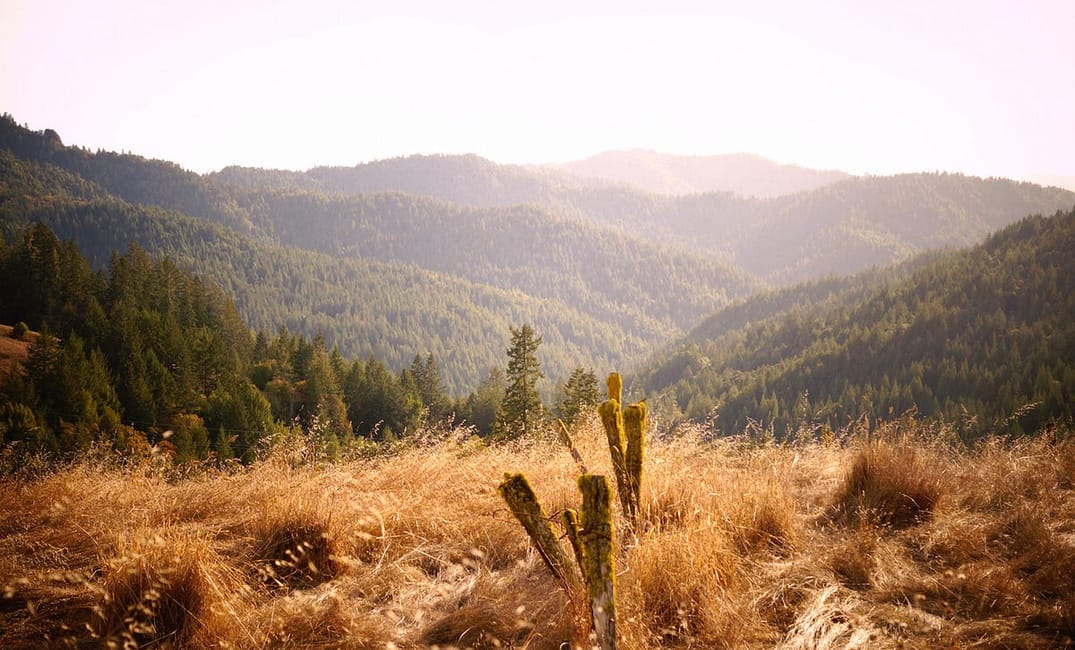
By Julie Albin
Ahh, Mendocino — poster child of the Californian wilderness. Inaugurated as one of the state’s original 27 counties back in 1850, the land was originally inhabited by four Native American tribes in the centuries prior. Then, in 1542, legendary Spanish navigator Juan Rodríguez Cabrillo stepped foot on this heavenly terrain and named the northern coastal border Cape Mendocino, from which the county later drew its name.
Whether you’re looking for a challenging hike or a relaxing day by the sea, with over 3,500 square miles of forested beauty, Mendocino has plenty to fall in love with. And more than likely, you’ll fall hard.
The Town of Mendocino
Whether the sun is bright and shining or the sky is gray and misting with coastal rain, this tiny postcard-worthy town will charm the pants off of you (though since it gets rather chilly, you’re likely to put them right back on). Also established in the 1850s, the town of Mendocino is a historical landmark with adorable Victorian architecture and northeastern flare. The artists and hippies who migrated here between the 1960s and 1970s carried their prolific counterculture along with them, creating more interest in the town. Even today, there really is no escaping Mendocino’s eccentric hippie vibe.
With romantic bed-and-breakfasts on just about every corner, you’ll be tempted to stay the night (or two). Start your day with some yummy brunch and mimosas at Flow Restaurant & Lounge, where you can soak in a perfect view of the sea from the outdoor-patio seating. On a rainy day, get cozy with a good book at Gallery Bookshop & Bookwinkle’s Children’s Books on Main Street. And weather permitting, take a stroll along the Point Mendocino Trail and experience the breathtaking scenery of waves crashing against the rocky cliffs, where you can catch a one-of-a-kind Mendocino sunset. And if you want to grab a beer and enjoy some Irish pub food, head over to the beloved Patterson’s Pub.
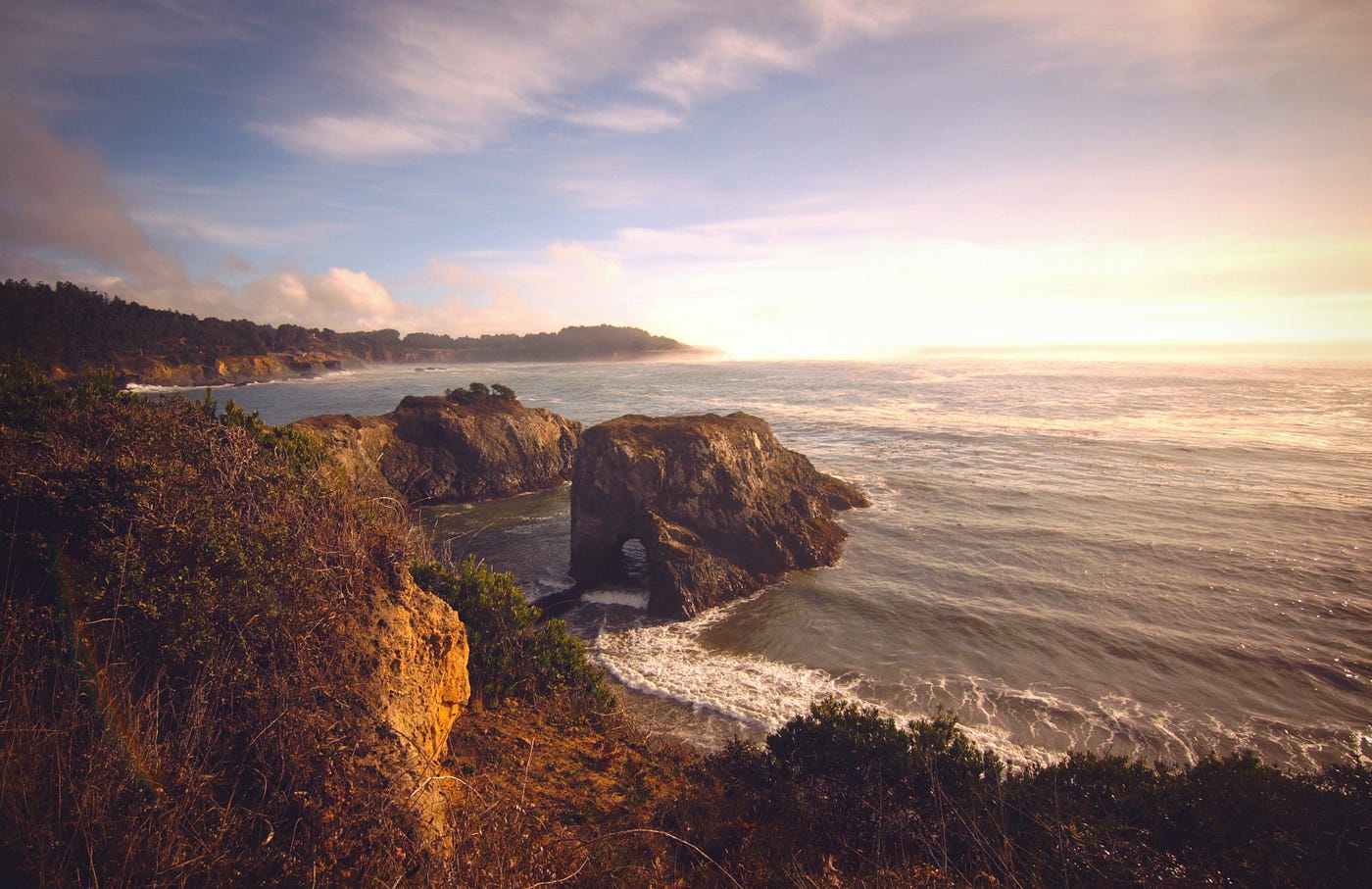
Chandelier Tree
Otherwise known as the “Drive-Thru Tree,” this is the magical tree that many of us remember from elementary-school textbooks. Deeply rooted just off of Highway 101 near the town of Leggett, it might escape you if you blink and miss the sign for the turnoff, since it comes up rather abruptly. So keep your eyes out.
Named “Chandelier Tree” after the natural shape and orientation of its branches, it stands at an estimated 315 feet tall and 21 feet in diameter. Estimated to be roughly 2,000 years old, the tree’s vehicle-ready cut was carved out sometime during 1936–1937 (the records from those days are spotty).
Ever since, it has been one of California’s most cherished attractions, as rows of cars line up every day to drive through this unique natural tunnel. It costs $5 per car for a day pass, which includes access to the park’s walking trails. And let’s be honest — $5 to drive through a tree? Beyond worth it!
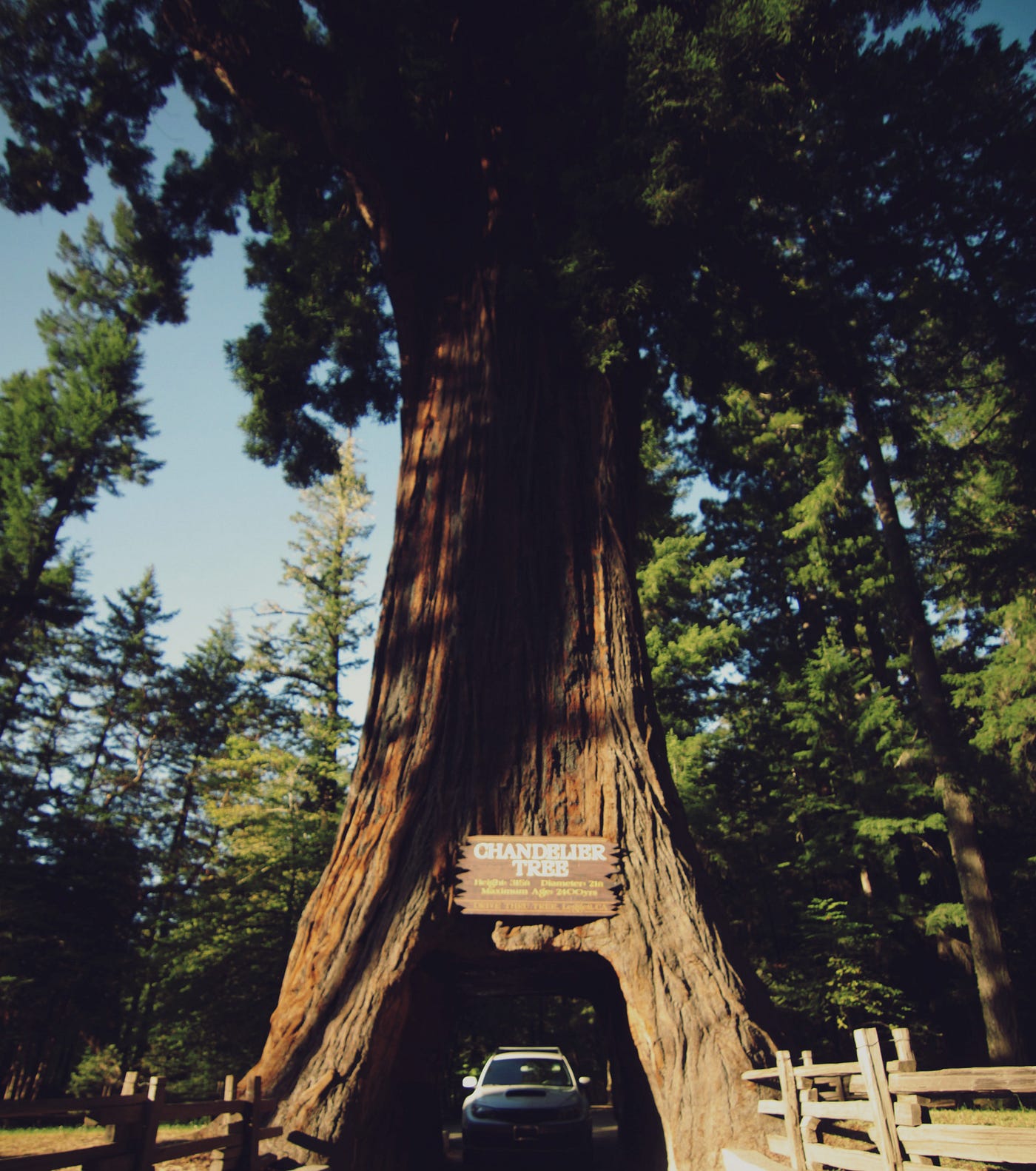
Jackson State Forest
Just off of Highway 20 are 50,000 acres of rustic fun in the largest state-owned forest. With a large population of second-growth redwoods, the Jackson State Forest is crucial for providing a habitat for the area’s plentiful species.
There are 11 recommended hiking trails in the forest that range from easy to difficult. On a recent visit, we decided to hike the Park Gulch Trail — 5.5 miles in length and peaking at 1,200 feet. This particular trail was quite far from the main road and situated next to a prison camp, which certainly made for an eerie and thrilling experience!
Click here for a list of the trails.
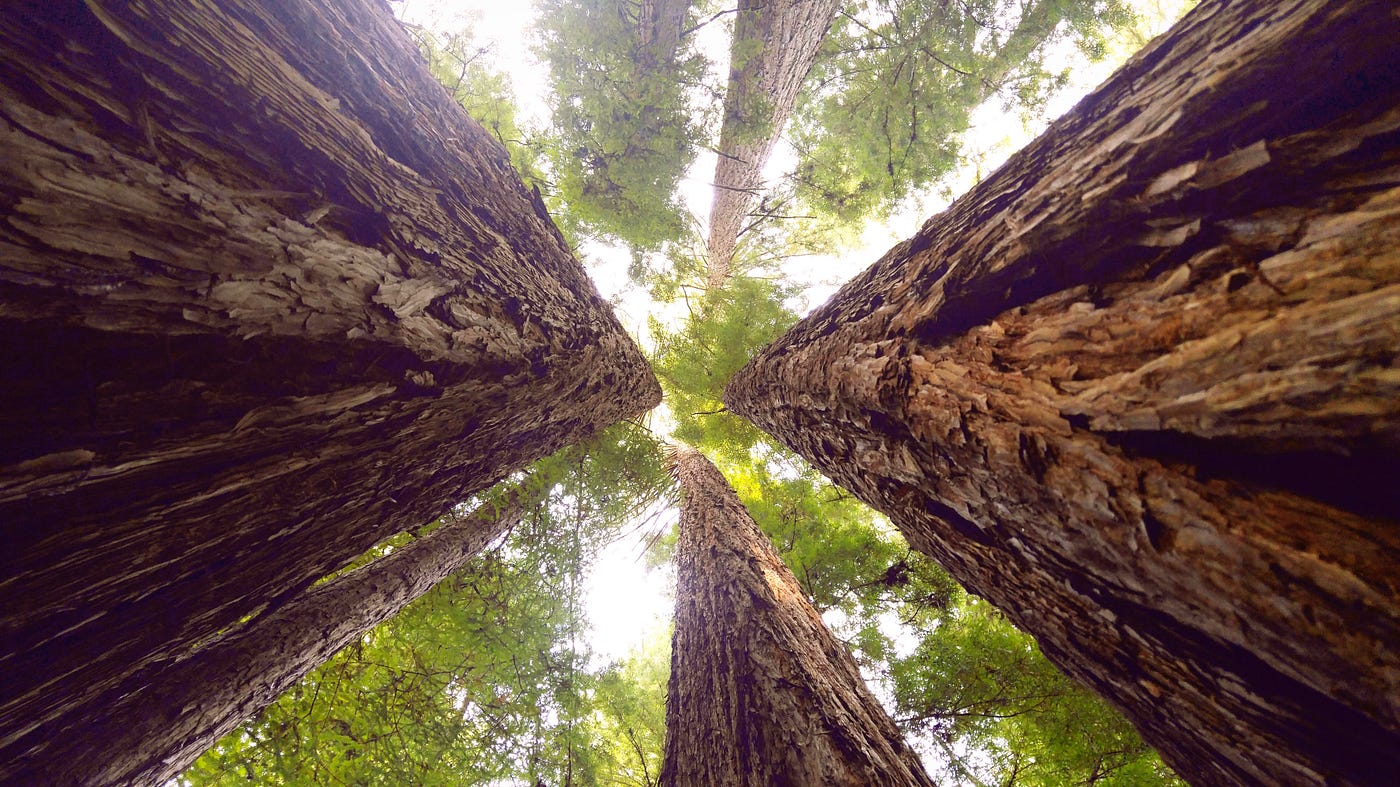
Glass Beach
On the coastal outskirts of the antique town of Fort Bragg, the famous (and highly protected) Glass Beach is a true case of one man’s trash being another man’s treasure. A former dump site, it is said that from 1906 to 1967, everything including the kitchen sink was simply tossed off the side of these sandstone cliffs. And while we thank Baby Jesus that those days are gone, this beach’s trashy reputation actually led to its becoming the scenic darling of the Mendocino Coast.
So what’s with the colorful array of glass stones on the sand? Thank Mother Nature, whose thunderous waves crashed down on broken glass bottles from the dump site for decades, perfectly smoothing out the shards into small pebbles and creating a salty, frosty coating.
Have a picnic on the cliffs, take in the one-of-a-kind scenery, or join the dozens of toddlers thrusting their hands in and out of the glass pebbles with euphoric smiles on their faces. When you’re done, go back to being an adult, and head down the street to the North Coast Brewing Company taproom for some suds.
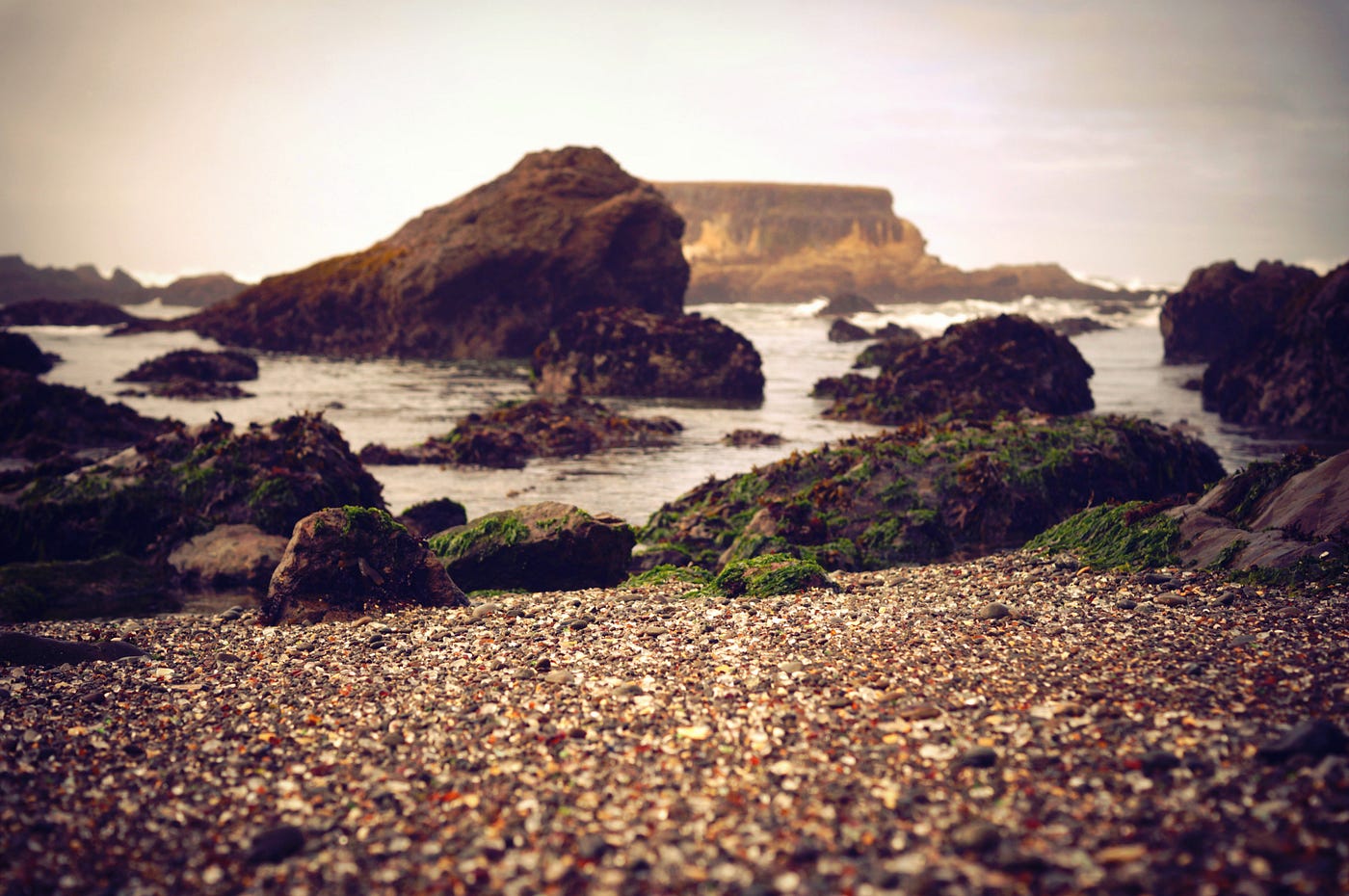
Anderson Valley
What kind of California county would this be without vineyards? Spanning 20 miles across, the Anderson Valley produces a rare assortment of Burgundian- and Alsatian-grape varietals, including Pinot Noir, Chardonnay, Riesling, Gewurztraminer, Pinot Gris and even a little bit of Zinfandel and Syrah on the eastern foothills. The valley is also home to three well-respected sparkling houses that produce their wine in the traditional method of Champagne.
The Anderson Valley has one of the widest diurnal temperature ranges, with chilly fog taking over from dusk till dawn and lots of brilliant sunshine during the day. The result is that the grapes fully ripen while maintaining remarkable amounts of acidity.
With some of California’s finest wines grown among a stunning landscape surrounded by forests of redwood and Douglas fir, this region almost requires you to spend a day here. And since almost all the wineries host walk-in tastings, you really have no excuse.
Some of my favorites: Handley Cellars, Knez Winery, Navarro Vineyards, Phillips Hill Winery, Roederer Estate (sparkling)

All photos by Julie Albin.



